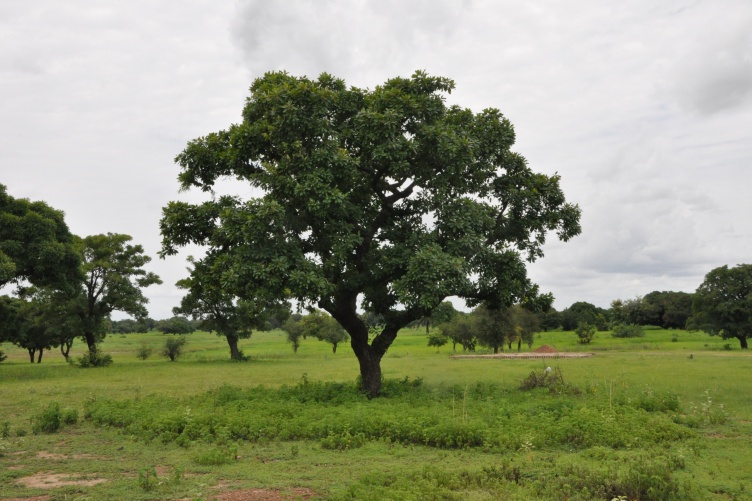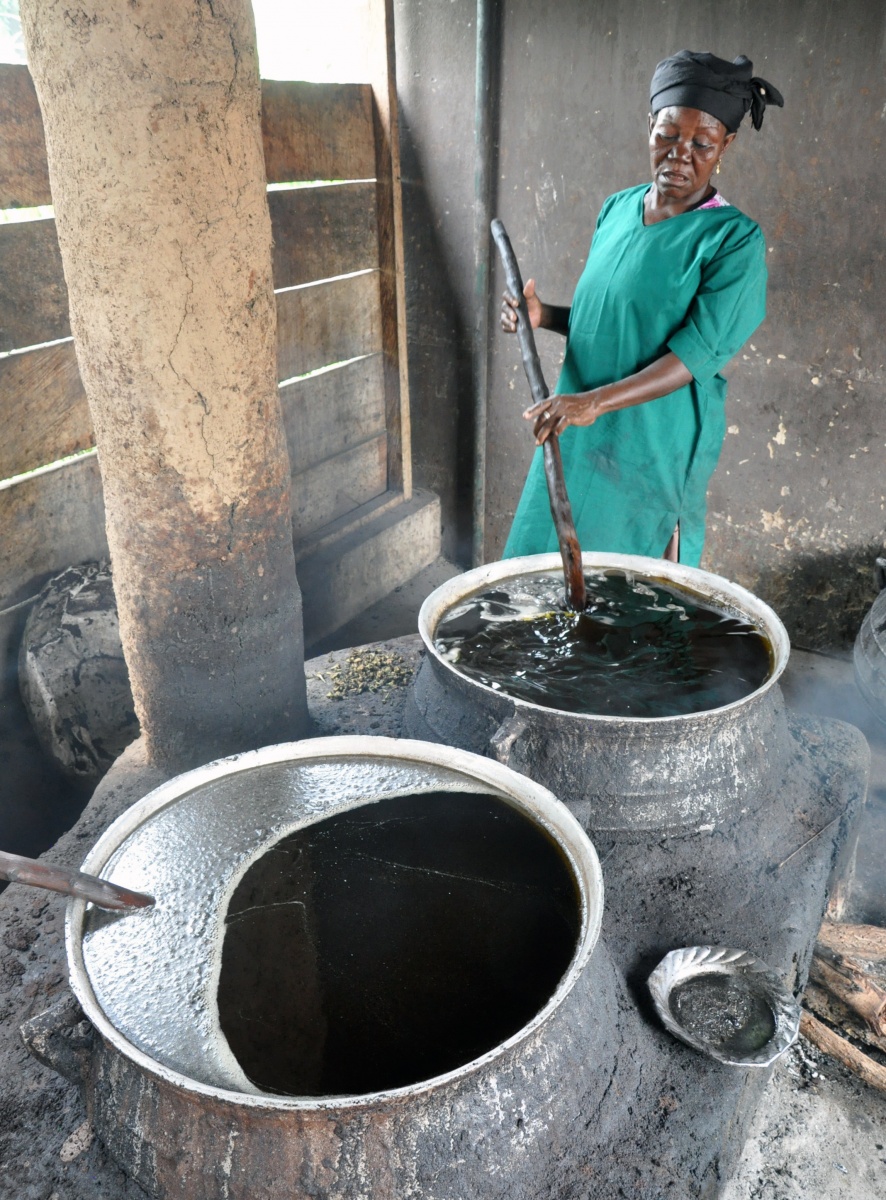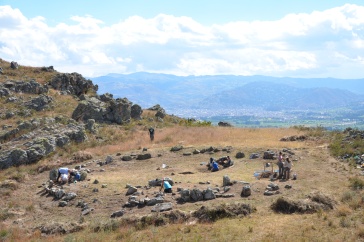
Shea tree Credit: Iago Hale/UNH
An international team of researchers led by UNH has sequenced the shea tree’s genome, providing a valuable resource for the strategic development of the species and contributing to its preservation.
The shea tree is a vital social and economic crop, and it is at risk. The tree is best known for the popular product shea butter—a multimillion-dollar ingredient used in cosmetics, personal care products, pharmaceuticals and chocolate. For hundreds of thousands of African families living in the “shea belt” it is also a crucial source of nutrition and income. But despite increasing demand for shea butter, the slow-growing shea tree is being threatened by other cash crops, and its preservation most likely lies in its genetic improvement.
“A shea tree can take 25 years or more to come into production so it can be very costly for a farmer to wait that long and wonder if a tree is worth keeping,” said Iago Hale, associate professor of specialty crop improvement. “With such a long growing period, traditional breeding strategies simply aren’t viable, which is one reason there aren’t any high-performing shea varieties. The shea genome will enable researchers to gauge the potential of a seedling as soon as it germinates and through genome-enabled tree selection, we can start moving the needle on this difficult species.”
In their study, published online in the journal Frontiers in Plant Science, researchers assembled a chromosome-scale reference genome for the shea tree. Like the human genome, the shea tree genome contains genes that determine traits helping researchers to determine tree characteristics. Genome annotation by the researchers led to the identification of 38,505 coding genes. Further comparative sequencing with a diverse collection of trees revealed nearly 3.5 million natural genetic variations, known as single nucleotide polymorphisms (SNPs), that can be used to distinguish trees and begin to understand the genetics underlying important attributes.

Shea butter plays a significant role in the daily lives of millions of African families living in the Sudo-Sahelian region which spans over 20 countries. Collecting shea nuts is nearly a universal household activity across the shea belt and, unlike other economic activities, is controlled almost entirely by women. According to daily shea butter consumption data, the number of women taking part in shea nut collection is estimated at more than 18 million. Shea is referred to as "women’s gold" because the sale of its products allows women to secure additional food for their families once cereal harvests are over and to generate cash for household expenses including clothing, medicine and school fees. The seasonality of shea availability is also critical since shea fruits are the only widely available, energy-rich food source at the end of the dry season.
“The shea parklands are in decline due to the threat of alternative, typically male-controlled cash crops like cashew and mango and the immediate pay-off of cutting questionably productive trees for firewood,” said Hale. “Women need to travel longer distances to collect shea nuts, which means more labor and less profits. To counteract these trends, we need to enhance the value of shea in the landscape. Genome-assisted breeding presents a path for achieving that.”
Internationally, shea butter is valuable for its use as a high-quality cocoa butter equivalent (CBE) in the chocolate industry. This is linked to its relatively simple fatty acid composition and its high levels of stearin, the primary determinant of shea butter quality. Using the newly mapped genome, researchers identified forty-five fatty acid biosynthesis genes in shea that likely govern stearin content. Being able to identify these enzymes could help researchers develop better selection strategies for seedlings.
Contributing public research institutions include the Cocoa Research Institute of Ghana, the West Africa Centre for Crop Improvement, World Agroforestry, the African Orphan Crops Consortium, Ghent University and the University of California–Davis.
Funding was provided by the Basic Research to Enhance Agricultural Development program, jointly funded by the National Science Foundation and the Bill & Melinda Gates Foundation.
University of New Hampshire inspires innovation and transforms lives in our state, nation and world. More than 16,000 students from all 50 states and 71 countries engage with an award-winning faculty in top-ranked programs in business, engineering, law, health and human services, liberal arts and the sciences across more than 200 programs of study. As one of the nation’s highest-performing research universities, UNH partners with NASA, NOAA, NSF and NIH, and receives more than $110 million in competitive external funding every year to further explore and define the frontiers of land, sea and space.
-
Written By:
Robbin Ray ’82 | UNH Marketing | robbin.ray@unh.edu | 603-862-4864

















































